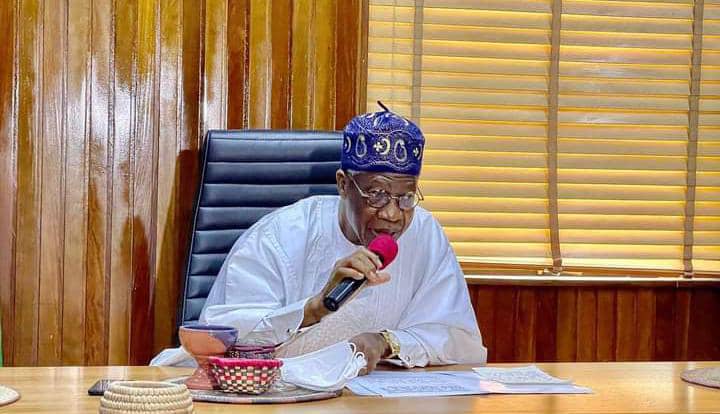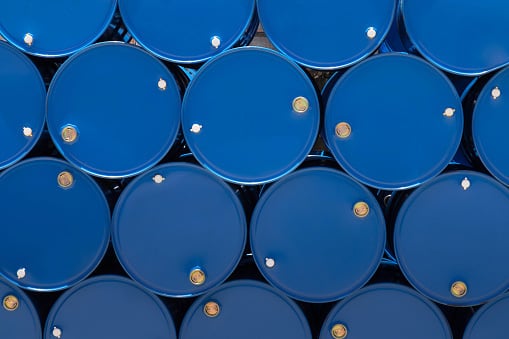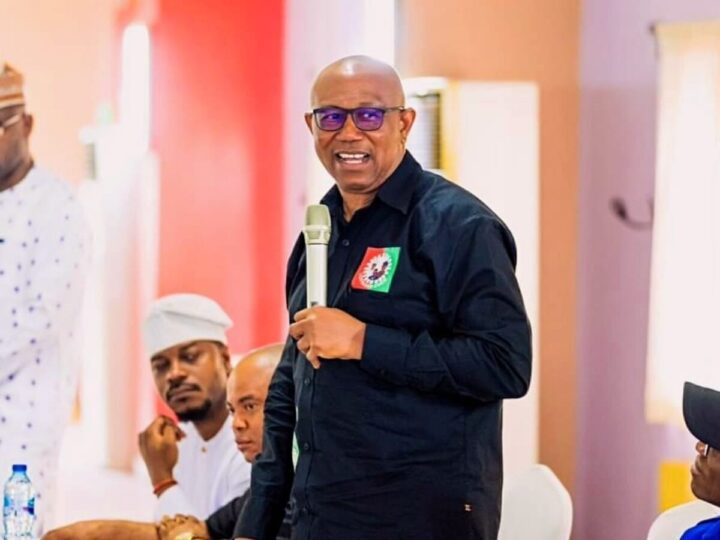In 2011, a report by the United Nations Environment Programme (UNEP) noted that — as a matter of emergency — before any clean-up exercise is done in Ogoniland, in Rivers state, potable water should first be provided. But the government agency in charge of the project began land remediation without providing water. After widespread criticisms, the government retraced its steps as the first batch of water provision begins in the oil-rich communities.
Clean, drinking water is now running in some parts of Ogoniland. This is in fulfilment of Nigeria’s promise to restore the ground and surface drinking water which had been polluted by oil exploration for more than 60 years.
“Water is flowing in Alesa to three surrounding communities. This is a dream come true. The people are happy. Even if you come here at 3 am in the midnight, the tap is running,” Victor Obari, a youth leader, said.
Alesa is one of the locations in Eleme — a local government area in Ogoni — infamous for one of the worst oil spills which occurred during the Nigerian civil war. It is one of the most deeply polluted environments in the area; its water is contaminated with benzene, 900 times above the standard of the World Health Organisation (WHO).

A pump operator at the waterworks said with excitement, “When we open the tap to the communities, these two tanks (450 cubic litres each) empties in less than 40 minutes. That means the people are really using the water; they are very excited.”
Advertisement
Findings by TheCable showed that the Alesa waterwork (built and commissioned by the Rivers state government) has been rehabilitated. Though it is designed to supply water to five communities namely, Alesa, Alode, Agbonchia, Aleto and parts of Ogale, it is only supplying to three communities.
“But not all the communities are connected to the water lines,” Obari added. “We are hoping that more communities will get connected to the water. We are praying that this will last because there have been many water projects in this community. They work for a while, and then stop working.”
Noble Nwolu, another youth leader in Nsisioken, a district in Eleme, told TheCable his people are happy that they are going to get water, even when the supply has not begun.
Advertisement
“The people are happy that they will get good water because, for 20 years now, we cannot bathe with this water or drink it. Some can use theirs to wash, while in some areas, you can’t even use it. We spend a lot of money buying bottled or sachet water. So, the expectation is that they will soon have good drinking water and stop buying water. But for now, everything is still the same,” Nwolu said.
A report published by TheCable in 2020 showed how crude oil flows out of wells and borehole taps in this community. As things stand, nothing has changed. Blessing Onoma, who lives in Eji community, narrated how the people trek several kilometres to get water.

“We are still suffering; we can’t drink this water. We can’t even bathe with it. If I show you my body, you will see rashes all over,” Onoma said. She spends more than N5,000 a week to buy water from local water merchants who sell truck loads of jerry cans.
In March, the federal executive council approved a sum of N6.4 billion for the first phase of the water provision which will cover different communities in four LGAs of Ogoniland namely: Alesa and Ebubu-Nsisioken-Ogale in Eleme; Barako-B-Dere-K-Dere; Terabor in Gokana; Bori-kpean in Khana and lastly Korokoro-Nonwa in Tai. This first phase, which will involve the rehabilitation of existing water works and the construction of new water stations, will be implemented through the Hydrocarbon Pollution Remediation Project (HYPREP), FG’s implementer of the UNEP report.
Advertisement
TheCable has been monitoring the implementation of this report, visiting the locations of the other water projects to assess the progress and community expectation.
COMMUNAL FEUD MAY THREATEN WATER PROJECT
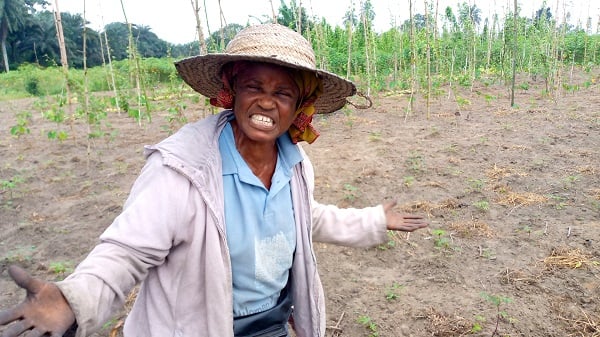
The story is different in Gokana LGA where two sister communities, B-Dere and Kegbara Dere (K-Dere) are supposed to share the water scheme, but some inhabitants of K-Dere said the plan cannot work owing to age-long enmity between the two communities.
Two water tanks, four treatment plants, and blocks of offices were under construction at B-Dere (the main water station), but work has stopped on the project as a result of the crisis. Lawrence Nwilene, project manager, GeoQuest Engineering, the contractor in charge, said there was a dispute on the parcel of land donated for the project.
Advertisement
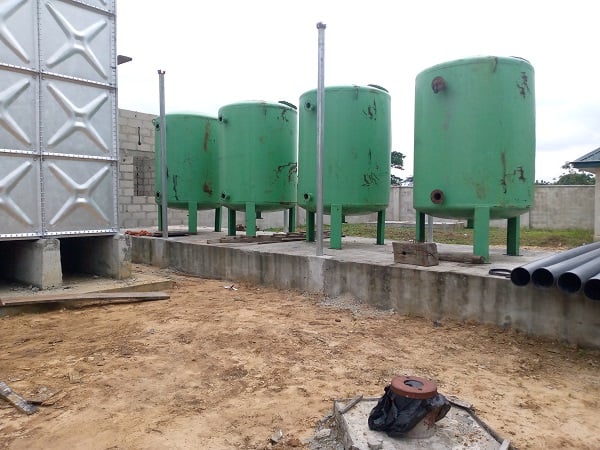
“The community gave us the land, but an individual is laying claims to it. As we speak now, the case is still in court and that is why we had to stop work on it. But we hope that it will be resolved soon,” Nwilene said.
Many community members don’t fully understand what is going on, but Grace Namon, environmental right activist and women leader at K-Dere, told TheCable about the possibility of the host community (B-Dere) “weaponising” the water against her community.
Advertisement
“For a project like water to be situated in your enemy’s home is not good. They have the tendencies, when their mind is not working well, to poison the water and pass it on to us to fetch. It will result in mass deaths. They can use it to victimise us. So, to avoid future regret, my people are saying NO! We will not use the water,” she said.
K-Dere, notably, is the home of Africa’s largest and foremost oil field, the Bomu manifold which has 54 oil wells and is one of the most polluted communities. Historically, the 1993 environmental rights protest spearheaded by late Ken Saro Wiwa took place at this very spot.
Advertisement
Speaking on the conflict, Eric Dooh, the first oil spill victim to win the global precedence against Shell at The Hague after an 18-year legal battle, said the choice of HYPREP to pair the two communities knowing the agelong dispute between them is a bad one.
“Why would they do that knowing that these two communities have been at loggerheads for years. It is wrong,” Dooh said.
Advertisement
WATER PROJECTS NEARING COMPLETION, BUT…
There is a newly built water station at Barako, the hometown of the former HYPREP project coordinator. Two huge 450 (900) cubic litres water tanks, a generating set, treatment plants, a laboratory and a block of offices for the operation and maintenance personnel were put in place, but the water supply is yet to begin.
“The people are seeing the water project, but they don’t believe it is real until we start supply. They are hoping it is real. We have completed reticulation, and pressure-tested the pipes; we have reached a 90 per cent completion rate. What is now left is to employ personnel that would manage the facility,” Nwilene told TheCable.
Similarly, at Ken Saro Wiwa’s home town in Khana LGA, Terabor in Gokana and Korokoro in Tai, the same structure of water supply station was sited — surface and overhead tanks, treatment plants, water-testing laboratory, and staff quarters. However, reticulation works in the communities and pressure testing are still ongoing, and in many places, fetching points have been erected within the community. But the residents and contractors all express similar worries and that is: will this gigantic project last?
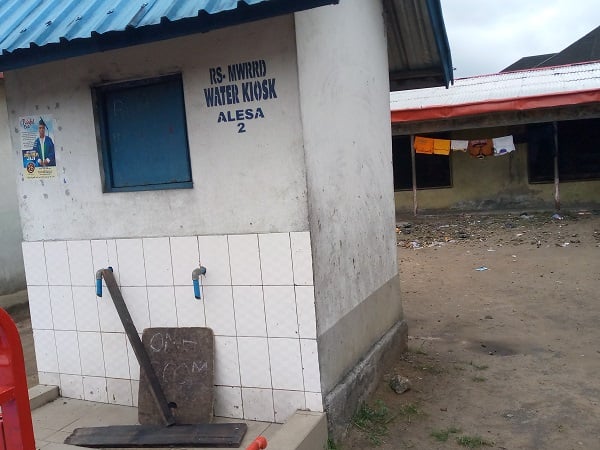
“My major concern is how to maintain this gigantic project,” Nwilene said. “We are only here for a year to train the community and then hand over the project. There are so many things to consider, starting from the cost of diesel, because there is no stable power supply here in Gokana, community ownership and maintenance. We are discussing all these.”
A contractor at Alesa, who preferred anonymity, expressed worry over the sustainability of the project.
“When there is no electricity, we can’t pump…and you know the cost of diesel now,” the contractor said. ‘’We have a big generator here. But the cost of diesel is very high. We are thinking of ways the community can also begin to self-sustain this. We heard that the federal government wants to link Ogoni directly to the national grid. We pray that it works.”
Philemon Ndelee, the lead engineer at El-Sunnic, contractor of the Terabor water works, said the company is looking at renewable energy as a solution to the challenges that may mar the water projects.
“We are also looking at solar options. We are installing a hybrid pump. You can see the generating plant there as backup. We are exploring all options because we are determined that this project will not fail,” Ndelee said.
In the May edition of the HYPREP Herald (a monthly newsletter), Ferdinand Giadom, project coordinator, admitted that most of the projects as conceived at the time of the 2011 UNEP report have no sustainability plan in place. The coordinator, however, promised things will change under his leadership.
WHAT NEXT?
“We are not playing politics with this one,” Giadom said. “We will connect Ogoni to the national grid.”
At the moment, several communities in Ogoniland are not connected to the national grid, hence the unstable power supply which is projected to hamper the success of the water schemes. According to the HYPREP project coordinator, there is a collaboration with the ministry of power. He said engineers of the Transmission Company of Nigeria (TCN) have carried out feasibility studies to connect Ogoni to the national grid.
“The transmission lines will then deliver 132KVA to injection stations in the six kingdoms of Ogoniland,” he added.
Giadom said such a feat will not only power the water stations but help achieve the full implementation of the UNEP report — the restoration of the environment and livelihoods, the functionality of the centre of excellence and the proposed economic development hubs that will house production and manufacturing activities across the four LGAs.

With the new scheme, residents, who have witnessed past failed water projects, said it is too early to raise their hopes high. According to them, they are looking forward to sustainable water projects that can ameliorate the age-long suffering of the Ogoni people.
Add a comment

